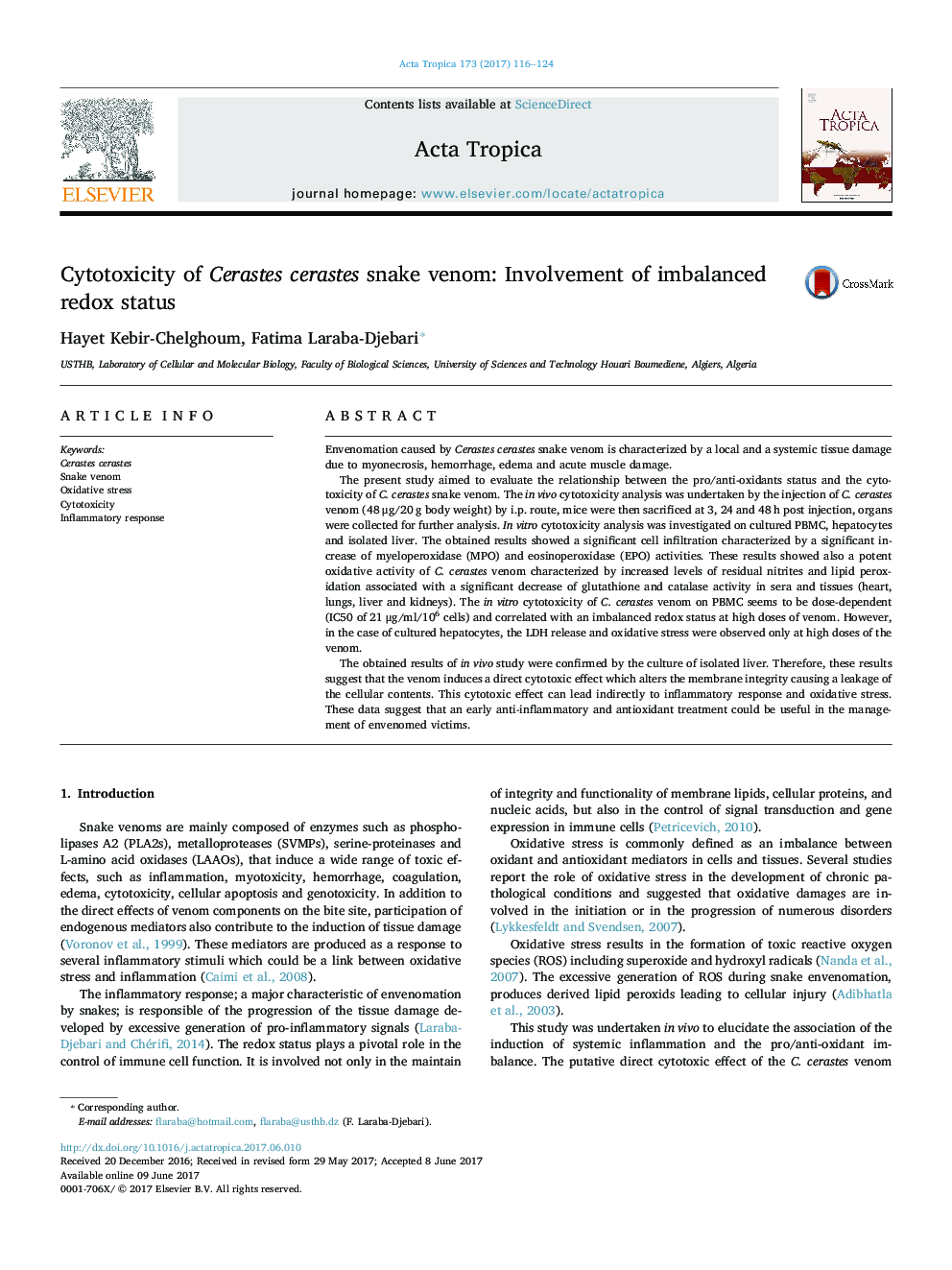| کد مقاله | کد نشریه | سال انتشار | مقاله انگلیسی | نسخه تمام متن |
|---|---|---|---|---|
| 5671086 | 1592751 | 2017 | 9 صفحه PDF | دانلود رایگان |

- Cerastes cerastes venom induces inflammation and oxidative damage in multiple mice tissues.
- Venom presents a low and dose-dependent cytotoxicity on PBMC.
- The in vitro venom cytotoxicity is timely associated to oxidative stress at high doses.
Envenomation caused by Cerastes cerastes snake venom is characterized by a local and a systemic tissue damage due to myonecrosis, hemorrhage, edema and acute muscle damage.The present study aimed to evaluate the relationship between the pro/anti-oxidants status and the cytotoxicity of C. cerastes snake venom. The in vivo cytotoxicity analysis was undertaken by the injection of C. cerastes venom (48 μg/20 g body weight) by i.p. route, mice were then sacrificed at 3, 24 and 48 h post injection, organs were collected for further analysis. In vitro cytotoxicity analysis was investigated on cultured PBMC, hepatocytes and isolated liver. The obtained results showed a significant cell infiltration characterized by a significant increase of myeloperoxidase (MPO) and eosinoperoxidase (EPO) activities. These results showed also a potent oxidative activity of C. cerastes venom characterized by increased levels of residual nitrites and lipid peroxidation associated with a significant decrease of glutathione and catalase activity in sera and tissues (heart, lungs, liver and kidneys). The in vitro cytotoxicity of C. cerastes venom on PBMC seems to be dose-dependent (IC50 of 21 μg/ml/106 cells) and correlated with an imbalanced redox status at high doses of venom. However, in the case of cultured hepatocytes, the LDH release and oxidative stress were observed only at high doses of the venom.The obtained results of in vivo study were confirmed by the culture of isolated liver. Therefore, these results suggest that the venom induces a direct cytotoxic effect which alters the membrane integrity causing a leakage of the cellular contents. This cytotoxic effect can lead indirectly to inflammatory response and oxidative stress. These data suggest that an early anti-inflammatory and antioxidant treatment could be useful in the management of envenomed victims.
The cytotoxicity of Cerastes cerastes venom is characterized by associated inflammation, oxidative stress and alteration of membrane integrity.113
Journal: Acta Tropica - Volume 173, September 2017, Pages 116-124